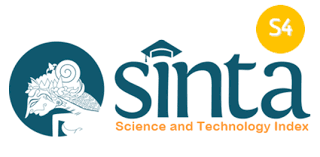MINIMISASI LAJU ALIR AIR LIMBAH PADA UNIT PENGOLAHAN DENGAN MENGGUNAKAN METODA WATER PINCH
Main Article Content
Abstract
In a conventional wastewater treatment, all waste streams are collected in a sump pond and directed to the designated wastewater treatment unit. Actually, a wastewater stream is not necessarily required to be treated in specific process when its quality and quantity as its concentration and flow rate are already low. The wastewater can directly bypass to other unit process. A method, which was called Water Pinch Analysis to determine the minimum flow rate, was applied in this investigation. Initially a target of minimum flow rate was made including composite curve. Afterward, a pinch point was located and its tangent to the curve was drawn to get maximum concentration of the waste entering the wastewater treatment unit. The result showed that for multi contaminant and one treatment unit, a minimum flow rate of 44.14 ton per hour was found or a reduction of 5.5% from its maximum flow rate of 52 tons per hour. An output concentration of 66.08 mg/L at the wastewater treatment was obtained, which is above the tolerance limit. Multi contaminant and multi treatment unit showed a flow rate reduction of 51,6% of Unit Treatment I and of 23,3% of Unit Treatment II. The eflluent concentrations were of 36 mg/L COD and 13,86 mg/L ammonia. This results were below the industrial wastewater standards.
Downloads
Article Details
Submission of a manuscript to Jurnal Purifikasi means that the work has never been published in another journal and is not under consideration for publication elsewhere. The author hereby agrees to submit the copyright of the manuscript and its contents to Jurnal Purifikasi, if accepted for publication. Accepted manuscripts will be published in printed form where the ISSN is bound in printed form, not in online form (pdf). Authors are not allowed to publish their work in other forms (journals) without permission from the Jurnal Purifikasi manager.
By submitting a manuscript, the author is deemed to know all the rights and obligations attached to each manuscript.








